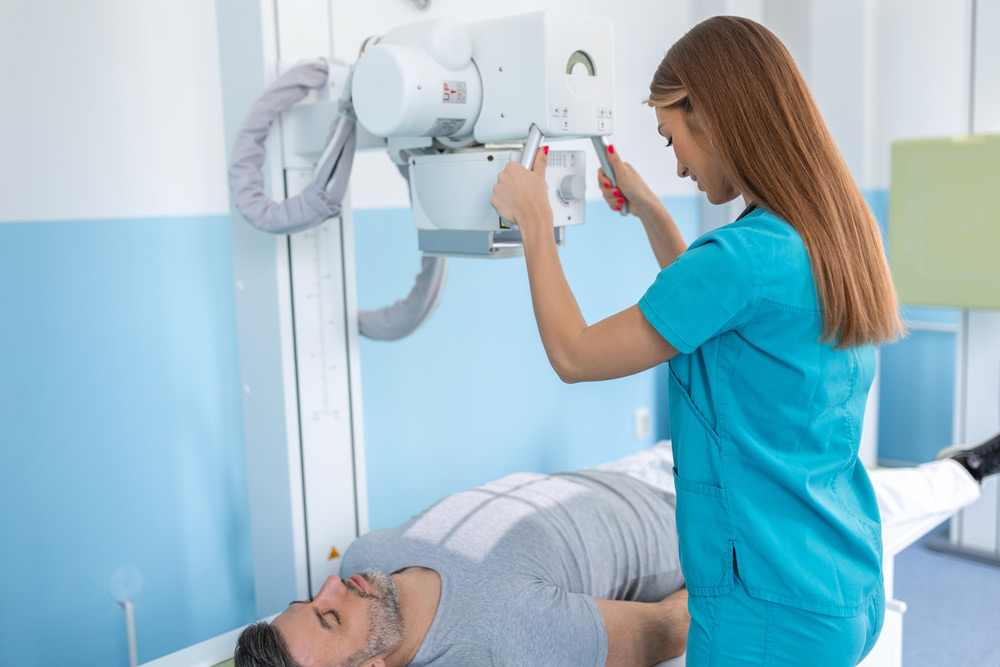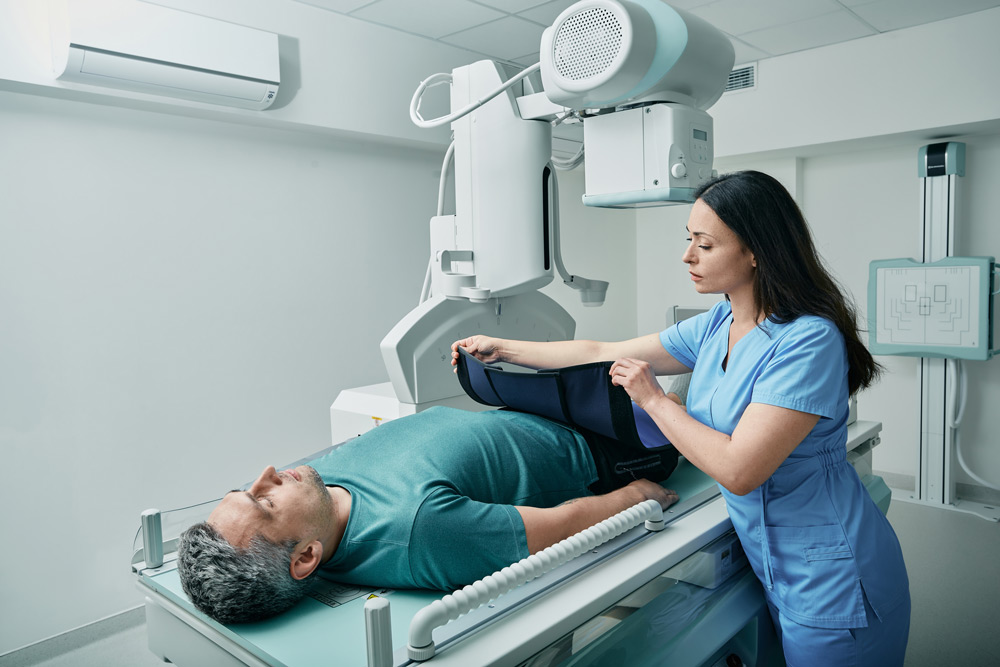
Radiography is a crucial imaging technique that plays a vital role in both healthcare and industrial fields. It uses ionizing radiation, such as X-rays or gamma rays, to capture images of the internal structures of the body or objects. This non-invasive method is primarily used in the medical field for diagnostic purposes but is also essential in industrial applications for non-destructive testing. From helping doctors diagnose broken bones to inspecting materials in manufacturing, radiography serves a broad range of purposes.
Radiography
Radiography is defined as the process of producing images of the interior of an object, usually a human body, by directing X-rays or other forms of radiation through it. The varying densities of tissues or materials allow the X-rays to produce different shades on a film or digital sensor, creating an image that can be analyzed by professionals.
Types of Radiography
There are various types of radiography based on the specific application, or the type of radiation used:
- Medical Radiography: This is the most common form, primarily used for diagnosing conditions like fractures, infections, and tumors in the human body. It also includes specialized imaging, such as mammography and fluoroscopy.
- Dental Radiography: This focuses on capturing images of the teeth, jawbone, and oral cavity to help diagnose dental issues.
- Industrial Radiography: This involves using radiation to inspect materials for defects or flaws without damaging the objects, a method widely used in manufacturing, construction, and security.
Radiography Techniques
Radiography can be performed using various techniques depending on the imaging needs:
- Conventional Radiography: Also known as film-based radiography, this technique uses photographic film to capture the image. Although still used in some settings, it is being rapidly replaced by digital radiography.
- Digital Radiography: In this technique, digital detectors are used to capture the image, providing faster results and improved image quality.
- Computed Tomography (CT): A more advanced technique that captures multiple X-rays from different angles to create cross-sectional images of the body.
- Fluoroscopy: Provides real-time X-ray imaging, which is used during procedures such as barium swallows and catheter insertions.
Dental Radiography
Dental radiography is a specialized form of radiography focused on capturing detailed images of the oral cavity. Dentists use these images to diagnose and treat a variety of dental issues, from cavities to impacted teeth. Dental radiographs provide critical information that may not be visible during a regular dental examination.
Types of Dental Radiographs
Dental radiographs can be categorized into two main types:
- Intraoral Radiographs: These are taken with the film or sensor inside the mouth and provide detailed images of individual teeth and the surrounding bone.
- Bitewing X-rays: These show the upper and lower back teeth and are primarily used to detect decay between teeth.
- Periapical X-rays: These focus on capturing the entire tooth, from crown to root, and are useful for diagnosing root infections or abscesses.
- Occlusal X-rays: These show large sections of the jaw and are often used to track the development of teeth in children.
- Extraoral Radiographs: Taken with the sensor outside the mouth, these provide a broader view of the jaw and skull.
- Panoramic X-rays: Capture the entire mouth in one image and are useful for detecting wisdom teeth, jaw disorders, or tumors.
- Cephalometric X-rays: Primarily used in orthodontics to assess the relationship between the teeth, jaw, and skull.
Uses of Dental Radiography
Dental radiography is essential for:
- Detecting cavities, especially those in hard-to-see areas like between teeth.
- Assessing the health of the tooth root and surrounding bone.
- Monitoring tooth development in children and teenagers.
- Planning dental treatments, such as extractions, root canals, and implants.

Digital Radiography
Digital radiography is a modern advancement in imaging technology that eliminates the need for traditional film. This technique has become the preferred method in many medical and dental settings due to its numerous advantages over conventional radiography.
How Digital Radiography Works
In digital radiography, X-rays are captured by a digital detector instead of traditional photographic film. The detector converts the X-ray energy into a digital signal, which is then processed by a computer to create an image that can be viewed almost instantly. This process reduces the time it takes to obtain results and allows for better image manipulation.
Types of Digital Radiography
There are two main types of digital radiography:
- Computed Radiography (CR): Uses a special plate that stores the image, which is then scanned and converted into a digital format.
- Direct Digital Radiography (DR): Captures the image directly in digital form, providing even faster results than computed radiography.
Benefits of Digital Radiography
Digital radiography offers several benefits, including:
- Lower Radiation Exposure: It requires less radiation to produce a high-quality image, making it safer for patients.
- Instant Results: Images can be viewed immediately on a computer screen, allowing for faster diagnosis and treatment.
- Enhanced Image Quality: Digital images can be enhanced or zoomed in to improve clarity, which helps in detecting subtle abnormalities.
- Eco-Friendly: Digital radiography eliminates the need for film and chemicals, making it more environmentally friendly.
Applications of Digital Radiography
Digital radiography is used in:
- Medical Imaging: To capture images of bones, lungs, and other organs for diagnosis.
- Dental Imaging: To detect cavities, monitor bone health, and plan treatments.
- Veterinary Medicine: To diagnose conditions in animals.
- Industrial Applications: To inspect materials for defects in industries like aerospace, manufacturing, and construction.
Traditional Radiography vs. Digital Radiography
While traditional radiography has been the standard for many years, digital radiography offers several advantages:
- Speed: Digital radiography provides instant images, whereas traditional methods require time for film development.
- Safety: Digital radiography uses less radiation, reducing the risk to patients.
- Image Quality: Digital images can be adjusted and enhanced, whereas traditional images are fixed and less flexible.
- Storage: Digital images are stored electronically, which makes them easier to manage and share compared to physical films.
Radiography Programs
If you’re interested in pursuing a career in radiography, there are several educational pathways to consider.
Types of Radiography Programs
- Certificate Programs: Typically last 1-2 years and are designed for individuals who already have a healthcare background.
- Associate Degree Programs: Usually 2 years in length and offer comprehensive training in radiography, including both classroom education and clinical experience.
- Bachelor’s Degree Programs: Provide in-depth training and may include specialized areas such as CT or MRI.
- Master’s Degree Programs: Less common but available for those pursuing advanced roles, such as radiologist assistants or administrators.
Radiography Program Curriculum
Radiography programs typically cover topics such as:
- Radiographic imaging techniques
- Radiation safety and protection
- Anatomy and physiology
- Patient care and communication
- Clinical practice in radiography These programs include both classroom instruction and hands-on training in healthcare settings.
Certification and Licensing
After completing a radiography program, graduates must obtain certification or licensure to work in most healthcare settings. The American Registry of Radiologic Technologists (ARRT) offers certification exams, and many states require a license to practice.
Conclusion
Radiography is a versatile and essential imaging technique that plays a vital role in both medical diagnostics and industrial applications. With advancements in digital radiography, this field continues to evolve, offering safer, faster, and more efficient ways to capture images. If you’re considering a career in this exciting field, explore radiography programs that can help you gain the skills needed to succeed.

